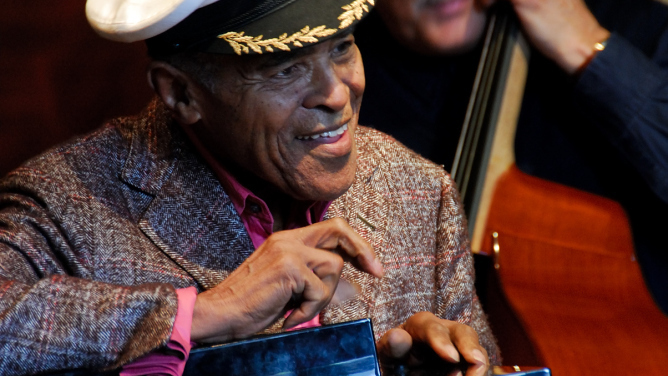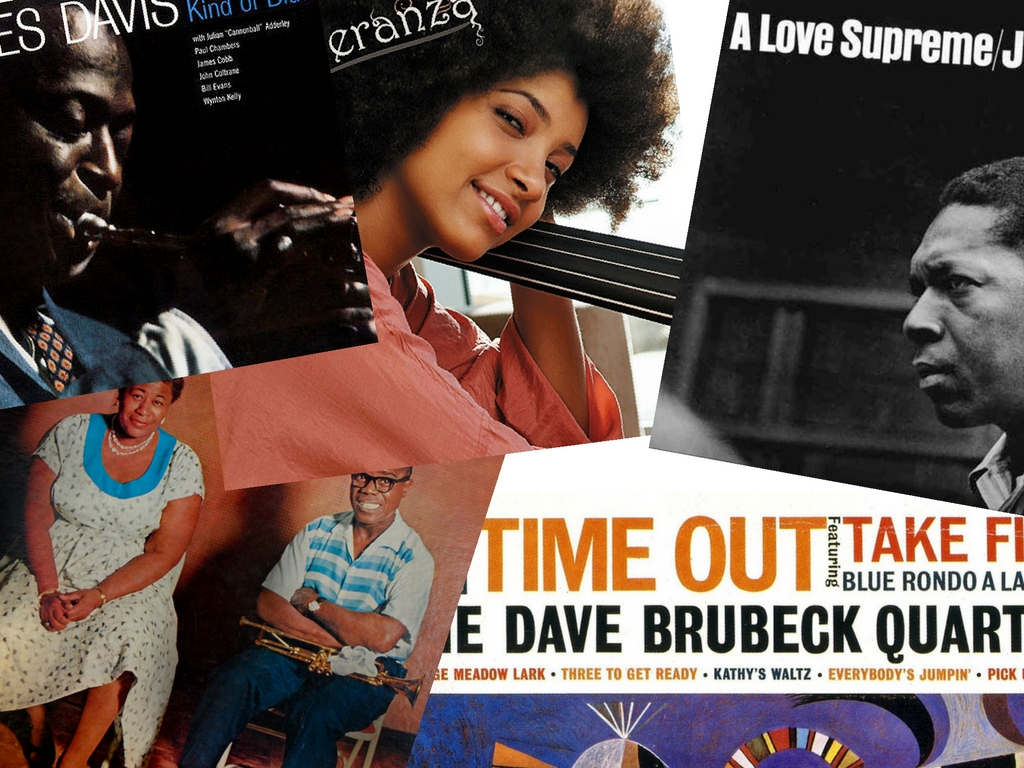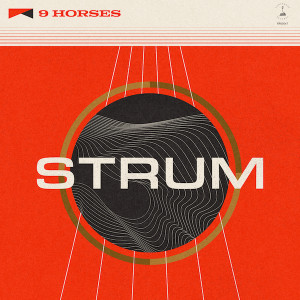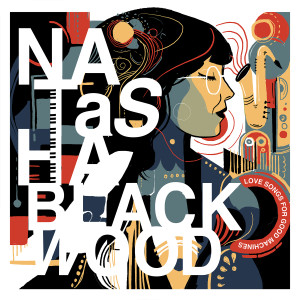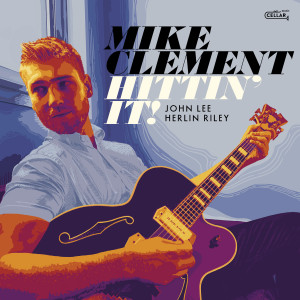
Seth MacFarlane became one of the youngest executive producers in television history when Fox premiered his brilliantly irreverent animated series, Family Guy, in January 1999. He was 24 years old, freshly matriculated from the Rhode Island School of Design. And while it can be considered a gamble for any studio to hedge its bets on a producer not yet old enough to rent a car, it was soon made clear that MacFarlane’s youth belied a wealth of creativity, talent, ingenuity and wit. Family Guy would become one of the most popular shows on television and a cultural phenomenon, coining running gags and catchphrases for years to come, and picking up several Emmy nominations along the way.
Some might regard Family Guy, which recently celebrated its 350th episode on air, as a TV show worth resting one’s laurels on. But for MacFarlane, it would be a springboard into a winning career in animation and film. Within two decades, MacFarlane would add television shows like American Dad! and The Cleveland Show and films like Ted and A Million Ways To Die in the West to his creative résumé. In that span, he also became a Grammy-nominated vocalist. Across five impressive albums, MacFarlane has proven himself a warm and lyrical singer in the mold of the iconic male crooners of the 1950s, interpreting the music of the Great American Songbook with deeply held reverence and sincerity.
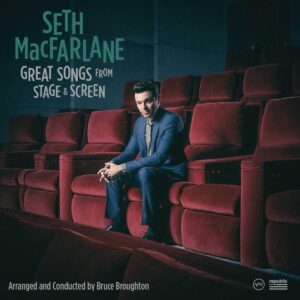 In August, MacFarlane released his sixth studio album, Great Songs From Stage and Screen, on Republic/Verve Records. The album is an homage to the Golden Age of popular song, a stretch of years from the 1930s to the 1950s when themes from Hollywood and Broadway were at the forefront of the American public imagination. What sets the album apart, however, is MacFarlane’s insistence on shining a light on the less heralded compositions from this era. “These are songs I wish would be sung more,” said MacFarlane in a phone interview shortly after the album’s release. “Rodgers and Hammerstein, Cole Porter, Lerner and Loewe – they’re all on there, but I wanted to highlight the work that more people should know about.”
In August, MacFarlane released his sixth studio album, Great Songs From Stage and Screen, on Republic/Verve Records. The album is an homage to the Golden Age of popular song, a stretch of years from the 1930s to the 1950s when themes from Hollywood and Broadway were at the forefront of the American public imagination. What sets the album apart, however, is MacFarlane’s insistence on shining a light on the less heralded compositions from this era. “These are songs I wish would be sung more,” said MacFarlane in a phone interview shortly after the album’s release. “Rodgers and Hammerstein, Cole Porter, Lerner and Loewe – they’re all on there, but I wanted to highlight the work that more people should know about.”
The album was recorded at the legendary Abbey Road studios, where MacFarlane recruited a stellar group of musicians that included Chuck Berghofer (bass), Peter Erskine (drums), Larry Koonse (guitar), Dan Higgins (alto sax) and Tom Ranier (piano). MacFarlane also enlisted help from members of the John Wilson Orchestra, which specializes in MGM musicals and the compositions of Rodgers and Hammerstein. Bruce Broughton, an icon of film and television scoring whose credits include Gunsmoke, Hawaii Five-O and The Wonderful World of Disney, contributed the arrangements.
Below is an excerpt of our full conversation with MacFarlane, in which he discussed his love for stage musicals, his favorite film scores and the mid-century work of Frank Sinatra.
With Great Songs From Stage and Screen, you’re narrowing in on a very specific canon of music: namely, musicals. What are your earliest memories with regard to musicals?
That’s a hard one, because that kind of music was always playing in my house. Both my parents sang, and they exposed my sister and me to so many of the classical musicals from that era. The Sound of Music may have been the first one that I remember. And there was also a strong history of performing arts in my hometown, especially when it comes to musicals. I was in a local choir group when I was a kid, and we were doing Gilbert and Sullivan tunes, things like that.
And what was it about this form – movies and plays set to music – that captured your attention?
Well, when I was a kid, it wasn’t so much musicals as it was film scores. I was a big fan of John Williams, Jerry Goldsmith, James Horner and Bruce Broughton – the great film composers of my generation. I just loved the orchestrations, the scope and scale of them. And they were the ones who led me to Sinatra, actually.
Sinatra seems like such a strong influence in your singing. It’s interesting to hear that you came to him through film scores. What helped make that connection?
Yeah, it’s funny. I didn’t buy my first Sinatra album until I got to college. I mean, I had been aware of Sinatra my whole life, but I didn’t really dive in until I was much older. I guess the connection was the beautiful orchestration behind Sinatra’s music. I was surprised by how similar those arrangements were to the orchestral film scores I was listening to.
In many ways, I think Sinatra’s arrangements are what separates him from his contemporaries, at least as much as the expressiveness of his singing style. More than that, the orchestra arrangements really underscore what a great arrangement can do for a great singer, or a listening experience in general. It’s so cinematic. Even without the vocals, a Sinatra record can feel incredibly textured and symphonic.
Do you have a favorite Sinatra arranger?
I think the Nelson Riddle and Gordon Jenkins period in the mid- to late ‘50s is the peak of Sinatra’s career. In the Wee Small Hours, Songs for Swinging Lovers, Only the Onley, Come Fly With Me – I think far and away that’s the sweet spot.
Like you, Sinatra was another figure behind a microphone and in front of a camera. I’m curious as to your take on Sinatra’s acting, and whether your musical background has had an influence on your own voice work.
For me, when I’m acting or doing voice work, I tend to think first in terms of the musicality of the phrase. It’s a means of working my way into the emotional “guts” of a line. And I think from the standpoint of singers who go on to act, that’s probably a similar tool they have at their disposal. And with Sinatra, you get the impression that he has a real understanding of phrasing, an innate understanding of the patterns of speech, both in dialogue and in singing.
Animation is obviously another major through line in your career. How did it intertwine with your singing? Were you actively performing while you were getting your start at RISD and later Hanna-Barbera?
Not entirely, at least not at that time. That said, I was working Sinatra-style elements into standup gigs and talent shows and those kinds of things. But my singing was still very much in its formative stages. And that’s maybe because, at the time, I was into Sinatra but wasn’t really into the good stuff. Don’t get me wrong, “Fly Me to the Moon” is great. “My Way” is great. But those aren’t the Sinatra tunes that stick with me. It’s recordings like “What’s New” on Only the Lonely, or “Glad To Be Unhappy” on In The Wee Small Hours. Those are the recordings that really made me want to dig in deep, to understand just what made him so good. Not to mention, the arrangements are just beautiful.
That’s an interesting notion to keep coming back to – the scale of these arrangements, with the full orchestras, the big bands. This period, the 1950s, was really the last time large-ensemble jazz was America’s most popular music. Why do you think that style fell out of favor?
You know, I’ve never really encountered a good answer to that question. All I can do is offer up another question: Do we think we’ve improved things by stripping all that away? We used to use so many different instruments in our pop music. Now we use, like, five. And they’re all electronic. Not that there’s anything wrong with that, but I miss hearing the different textures that you can create with so many different instruments. That used to be the composer’s domain, and now it seems the control has fallen out of the hands of the composer and into the hands of the producer, and that’s not necessarily a good thing.
And what’s interesting is we’ve reached a time in television where we’re really at an apex. I think television has reached a new peak of creativity and of quality, way more so than in the past. And it’s just sad because I feel like, in the past 20 years, music has done the opposite. I miss it.
Not to mention the whole notion of the concept album. These days, even jazz albums are put out as a collection of singles. But your discography has taken the opposite tack. Your debut album, Music Is Better Than Words, was reminiscent of some of those Sinatra concept albums of the 1950s. What was the preparation like for that album?
I was training with Lee and Sally Sweetland, who were both in their nineties at the time. They had trained a number of singers over the years, and legend has it that they worked with Sinatra at one point. I’ve never been able to verify that, but I believe they did. They did train Streisand at one point. They trained you in the old school way, as if you’re in a room with no microphone, which means that, if you want people to hear you, you’re going to have to put some power behind your voice, and you’re going to need to gain some serious control over the air that you’re expelling.

That’s so important, because your voice changes over time. And for a male singer, at least when you get into your forties, if you can maintain control of your voice, you’re really hitting your peak. When you’re in your twenties, you can beat the shit out of your voice and it’ll always be there for you. But once you reach your forties, if you can maintain your voice, there’s a full-bodied sound and a richness that you don’t necessarily have in your twenties. And I think you hear it in Sinatra’s voice, too. Those recordings from the 1940s are of course wonderfully pure, and he’s got this fantastic control over his voice. No one touched him in that era, but when he got a little older, that’s when the good stuff really started to happen.
Your new album Great Songs From Stage and Screen features some deep cuts from the Great American Songbook. And that’s certainly a unifying thread, but would you say there are any other underlying concepts?
Conceptually, it’s definitely lighter than some of my previous records. This one wasn’t designed to be quite as dark as No One Ever Tells You [from 2015], which was still very melancholy, but more of a twinge of hope amidst the sadness of those ballads. This one is very light. It really is more of a repertoire style record. It’s just a selection of songs that I wish would be sung more. So you know, instead of “Oklahoma” by Rodgers and Hammerstein, we do “All Er Nothin’.”
You’ve mentioned how a great arranger can bring out the best qualities in a singer. Your new album features arrangements by Bruce Broughton, who has had an amazing career in television and film. What did he bring to the table?
In the same way a great writer can adapt to any genre, a great musician can adapt to any style. You know, John Williams in the 1960s wrote some great jazz, and yet we all think of him as a symphonic or classical composer. So I was aware of Bruce’s work and had been for decades, and I’d never heard him do anything like this. I’ve never heard him arrange for vocals. And a couple of years prior, I had done a show at the Hollywood Bowl with John Williams and the Hollywood Bowl Orchestra. I joined them for, I think, three songs. One of the songs they wanted me to do was “Luck Be a Lady,” and the arrangement happened to be by Bruce. It was fantastic.
So when it came time to record this new album, it seemed worth it to reach out to Bruce. His writing is so expressive and so bright and so textured in the way that so many of the greatest arrangements from that era were, and he just nailed it. It feels jazzy, which is totally appropriate for the vocals, but it also has this kind of flowery fringe to it, a musical fringe. It’s subtle, but it suggests the “show” portion of these songs from stage and screen, without overshadowing the jazz portion. So it was a perfect fit.
You recorded this album at Abbey Studios in London. Why did you make the trip across the pond?
Well, there is an orchestra called the John Wilson Orchestra in London whose namesake is a phenomenal conductor. He really trained his musicians to play in that grand, sweeping style that I was looking for. That’s a really tough style to do because it’s very specific in this day and age. It’s got a lot of vibrato, that kind of thing. And not every player is up for that. But the John Wilson Orchestra – that’s what they do. And they do it so right.
Covering music from the Great American Songbook can be difficult, because there’s only so much wiggle room for re-interpretation. How did you strike the balance between paying homage to the original compositions and putting your own spin on these songs?
It was really about creating something that feels new. When it comes to Sinatra, for example, I think I can count on one hand the number of tunes that he actually had a hand in writing. He was a great interpreter, but one of the things that he did so beautifully was take a song that was largely forgotten and make it new. To me, there’s nothing less interesting than singing “Fly Me to the Moon” or “My Way” because, let’s face it, you’re never going to do it as well as Sinatra. He made that famous, so pick something else. That was my whole idea: I wanted to make something more obscure my own. I wanted to expand the catalog. That, for me, is the more interesting work. You’re introducing something new. With all of these albums, that’s the goal: to find things that are truly great, but that are going to be new to a lot of listeners.
We spoke a bit about how large-scale orchestrations have fallen out of favor, but I think you could say the same thing about the movie musical, which you’re really not seeing that much of these days. Why do you think that is?
Well, I do think we’re seeing a handful. They pop up now and then, and some with great success. The Greatest Showman was a musical, but more of a pop musical. La La Land, obviously. The Disney movies in the ‘90s were, in a lot of ways, the last movies to really embrace that style in its fullest form. But no, not in the sense that you’re talking about: a heavy-hitting classically orchestrated musical film. That hasn’t really been replicated in this era.
But look, that genre is certainly alive. I wouldn’t count it out. The difference is, back in the day, you had a talent pool that really could do it all. There were people like Gene Kelly and and Mitzi Gaynor and Donald O’Connor and Danny Kaye – the people who really could do everything. It wasn’t like they were going to learn how to dance for this one movie. No, they knew how to dance. They’ve been doing it since they were young. And that can really make a difference, having talent like that, because otherwise it can be hard to justify the finances of a musical film. Nowadays, you’d have to bring in a big star. Of course, the odds are that big star being able to sing and dance are relatively small. There are very few Gene Kelly’s out there right now. And that’s because most movies don’t require singing and dancing, so that’s not a skillset that an actor really has to have to make it in Hollywood. Back then, they did.
But that’s a complicated question. I’m hoping we see some of these movies again.
Seth MacFarlane will be serving as the guest contributor to our Winter 2020 issue, which is dedicated to “Jazz and Film.” It will be available to subscribers in digital and print versions in December.

